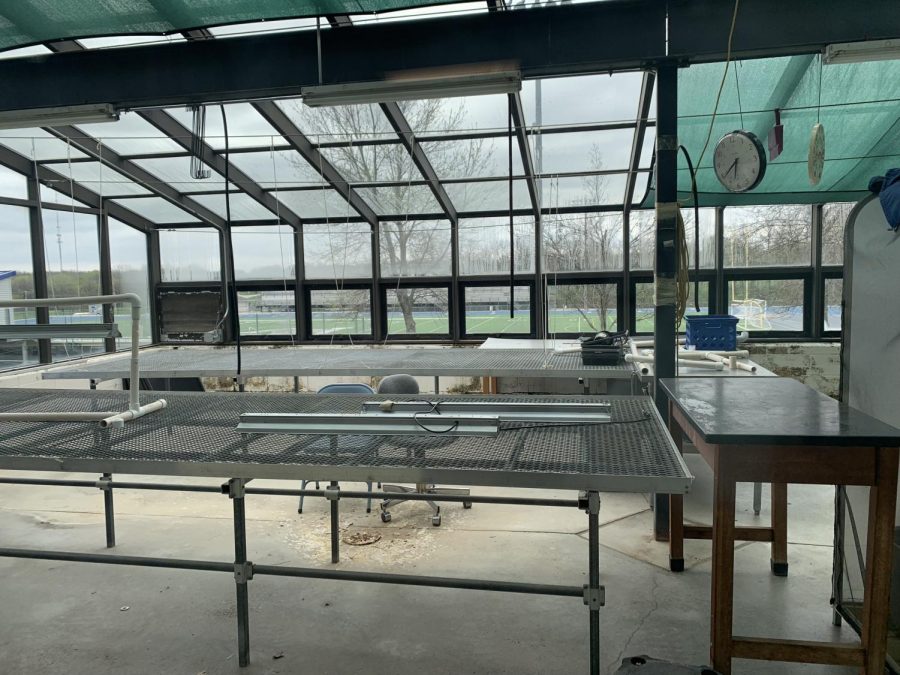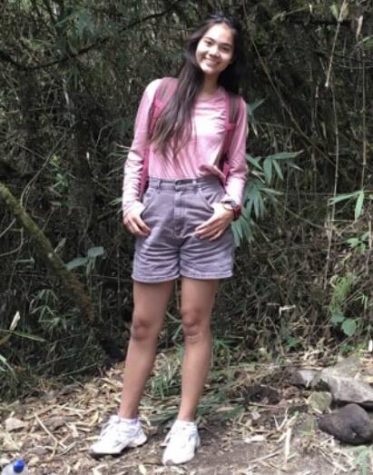One of the most unique facilities at Pleasant Valley High School is ironically one of the least known and used. Attached to the south side of the school is a full-sized greenhouse, accompanied by a smaller one on the second floor facing the west.
The second-floor greenhouse was built as part of the original building in 1959. On the other hand, the first-floor greenhouse was added in 1987 after requests from the science department staff. Mike Zimmer, principal of Pleasant Valley High School, commented on the construction of the greenhouse.
“[For] high schools that do not have an agriculture program, it’s more rare to see a greenhouse,” Zimmer said. “[The greenhouse] was cutting edge when it was built, along with the horticulture class that was taught in it.”
As Zimmer mentioned, the greenhouse was originally the location of a horticulture class. Craig Parker, a PVHS science teacher who had taught horticulture in its last years, explained: “We would grow plants out there, teach students how to do cuttings, and study many aspects of plants,” he said.
However, the class was discontinued in the early 2000s. Changing state science standards did not align as well with the class. Students also began to lose interest in horticulture and to request different types of classes, such as AP Physics, AP Chemistry, and Anatomy. “When that class was discontinued, there no longer was much function for the greenhouse,” Parker said.
After horticulture, the greenhouse had multiple transient uses. There was a student-led plant club, which then discontinued once those students graduated. Faculty members grew plants there, but this custom ended when those faculty members retired. Some also entertained the idea of growing herbs and plants for the high school cafeteria. Currently, the first-floor greenhouse serves no purpose, and the school uses the second-floor greenhouse for storage.
Difficulties in maintaining the greenhouses attribute to why all of these activities eventually ended. The greenhouse has heating and irrigation systems, but the extreme shifts in weather and temperature throughout the year make maintaining a stable environment incredibly difficult. Just this past winter, disused pipes in the greenhouse froze, burst, and flooded the adjunct classroom.
In addition to this environmental difficulty, the second-floor greenhouse is incorrectly oriented for growing plants. It faces the west, so it receives no sunlight for most of the day and then receives too much in the evening. The first-floor greenhouse is perfectly oriented, but its other difficulties outweigh this benefit.
Resources are readily available for students interested in using the greenhouse, but the greenhouse simply is not a structure students know much about. Clubs which previously used the greenhouse still have funds set up, even though they are no longer active. Lack of interest, as well as maintenance difficulties, make it difficult for the greenhouse to be used, despite these funds.
With the neglect the greenhouse receives now, it can be assured that any expansion in its area would sadly result in the demolition of this unique facility, with no plans to restore it. As Zimmer said, “It is the most underused, beautiful facility we’ve got here.”
Hopefully, students in the future will find an activity or educational opportunity for the greenhouse. With the resource the school provides and the diverse interests of the student body, there is a high potential for spectacular learning experiences in Pleasant Valley’s greenhouses.









